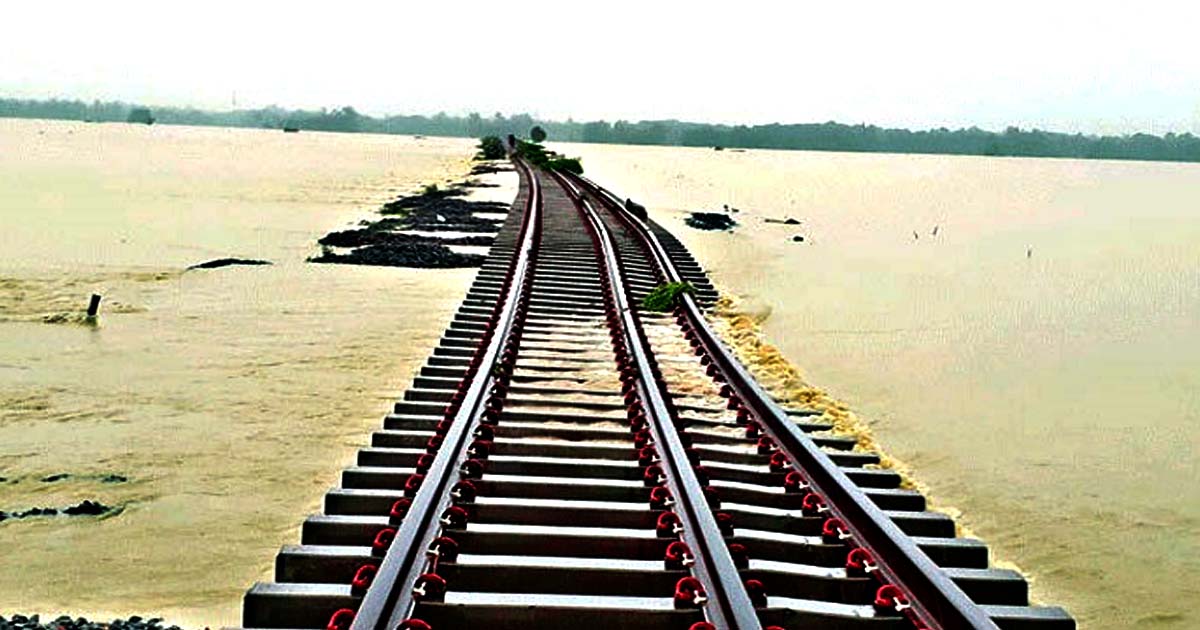The A-League government has increased the cost of the Dohazari-Cox's Bazar railway by 874%.
A recent inspection report from the Implementation, Monitoring, and Evaluation Division (IMED) of the Planning Ministry highlights alarming concerns regarding the Dohazari-Cox's Bazar railway project.
The report states that the project was approved without a proper plan and questions have been raised about the costs and timelines. The original project timeline was three years, but it has now been extended by 12 years, with the project scheduled for completion in 15 years. The official completion was expected in December this year.
Chinese contractors China Railway Engineering Corporation (CREC) and China Civil Engineering Construction Corporation (CCECC) along with Bangladesh’s Toma Construction Company and Max Infrastructure Limited have divided the work into two parts.
Additionally, under the project, nearly 28 kilometers of railway track was to be built from Ramu in Cox's Bazar to the Ghumdhum border in Bandarban’s Naikhong, but this section has now been temporarily suspended. This suspension has led to a reduction in project costs. A proposal to revise the project cost has been submitted to the Planning Commission, suggesting a reduction to 11,336 crore Bangladeshi Taka. However, even with this reduction, the cost is still 343% higher than the original budget. The amendment proposal has yet to be approved.
On October 11 and 12, IMED director Mummitur Rahman visited the project areas in Chittagong and Cox's Bazar and submitted a report that exposes excessive costs, delays, and neglect of infrastructure. The report also mentions an audit objection of Tk 440 crore related to the project's finances.
IMED Secretary Abul Kashem Mo Muhyuddin said, "We have started on-site inspections of all major projects. As part of this, we have inspected the Dohazari-Cox's Bazar railway project. Several irregularities have been found, and we will send the inspection report and recommendations to the concerned ministry."
As part of the project, the iconic Cox’s Bazar station was built at a cost of Tk 236 crore. The five-story station includes hotels, restaurants, retail shops, and multipurpose halls on each floor for commercial use. However, the hotel on the third floor, with 39 rooms, remains vacant.
Although train services on this route began a year ago, these commercial facilities have yet to be utilized. IMED officials observed this lack of usage during their inspection.
The report also highlighted that the delay in commercializing the constructed facilities is causing financial losses for the government. Moreover, the lack of proper maintenance may lead to the deterioration of these infrastructures.
According to IMED’s inspection report, the audit department of foreign-aided projects has raised 25 objections regarding the total expenditure during the 2021-22 fiscal year. These audit objections amount to around Tk 440 crore, with most objections concerning unpaid government dues, unpaid taxes, and excessive bill payments.
Looking into the historical documents of the project, it was discovered that railway communication in this region was first considered by the British colonial government of Myanmar 135 years ago. Accordingly, in 1890, Myanmar's railway authority initiated a survey to construct a railway line from Chittagong to Ramu and Cox's Bazar. Myanmar Railway conducted a survey between 1908-09. Further surveys were conducted between 1917 and 1919, and project work began after that. During that time, 50 kilometers of railway track was built from Chittagong to Dohazari, but the construction halted due to World War II.
After the Second World War, India, Pakistan, and Myanmar became independent, and the railway line was never completed. In 1958, Ayub Khan's government attempted to restart the project, but it was unsuccessful.
In 1971, Japan Railway Technical Service (JRTS) planned a survey for freight and passenger trains along the route, but the Liberation War interrupted the plan. After Bangladesh's independence, the project gained attention again. In 1976-77, JRTS conducted another survey at the government's request. Later, in 1992, the ESCAP Commission proposed three Euro-Asian rail networks, one of which was planned to connect Bangladesh to Myanmar. After that, there was no significant progress on the project until the Awami League government took office in 2009, resuming the initiative as part of regional cooperation.






